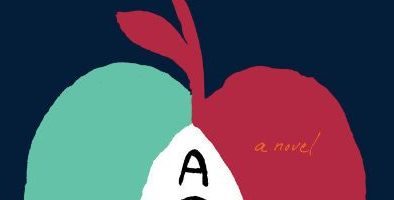When a lesbro among lesbros assumes the identity of a trans man…
How do you identify?
Do you ident-defy?
Do you explore/abhor/adore your identity?
Seventeen-year-old Adam Freedman is confident in his identify as a straight male.
Until he spends the summer in New York City with Casey, his Sapphic sister, and discovers that the bloom is off the heteros.
For Casey and her coterie, out is in, equality is a cause near and queer to their hearts, and identity is one big transcendental dykechotomy.
Not wanting to upset the Big Applecart, Adam adapts, adjusts, and readjusts his thoughts and actions accordingly. In the words of the novelist, “Rather than having a protagonist who is a misfit amongst the mainstream, Adam is the mainstream trying to fit in amongst misfits.” To that end, he accompanies his sister to everything from a gay marriage rally to an L Word viewing party (the author previously served on the show’s writing staff).
Theoretically, Adam should be having a gay old time, but with all this Sapphic traffic, how is he ever going to get out of all this… out-ness?
Fortuitously, there is a way out: by passing as a trans man. In fact, unbeknownst to Adam, that’s exactly what this lesbro has been doing all along. Adam has mixed feelings about this: fright, delight, this-just-might-work.
But does might make right?
When Adam meets Gillian, a pretty, witty, “cis” boom bah kind of girl who insists she could never date or mate with a biological guy, Adam’s artificial transition becomes official.
To authenticate his lie, Adam learns all he can about trans folks. But no matter how much he knows, she doesn’t know the truth, which makes Adam feel at once giddy and guilty. This inverse fruit fly will be in the soup if Gillian finds out that her beloved former broad is actually a fraud.
As a novel, Adam is novel. As a character, Adam is alive and well-written. In fact, all the characters are at once clearly and queerly delineated, uttering dialogue that is utterly colloquial.
As far as prose goes, it is riveting, riotous, and ridiculously astute. Mendacity and veracity exist side by side, not separated by some great divide, the way gender and sexuality too often are.
I should note that some of the sex is on the vivid side, particularly when the “play party” comes into play, and that the lesbian characters are peculiarly, if not perniciously, phallocentric.
But at its core, this is a story of transformations, celebrations, and revelations; of learning to embrace rather than efface the elasticity of gender and sexuality.
Ariel Schrag doesn’t give it to you straight: her book is incisive and divisive, ingenuous and ingenious.
It puts the “New” in New York City.
So take a big bite of Adam’s Apple.
